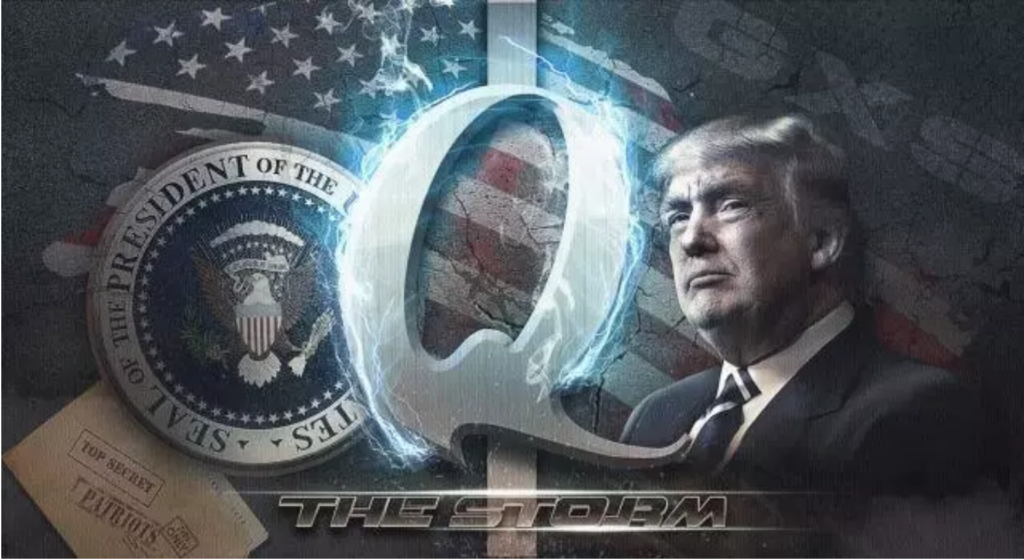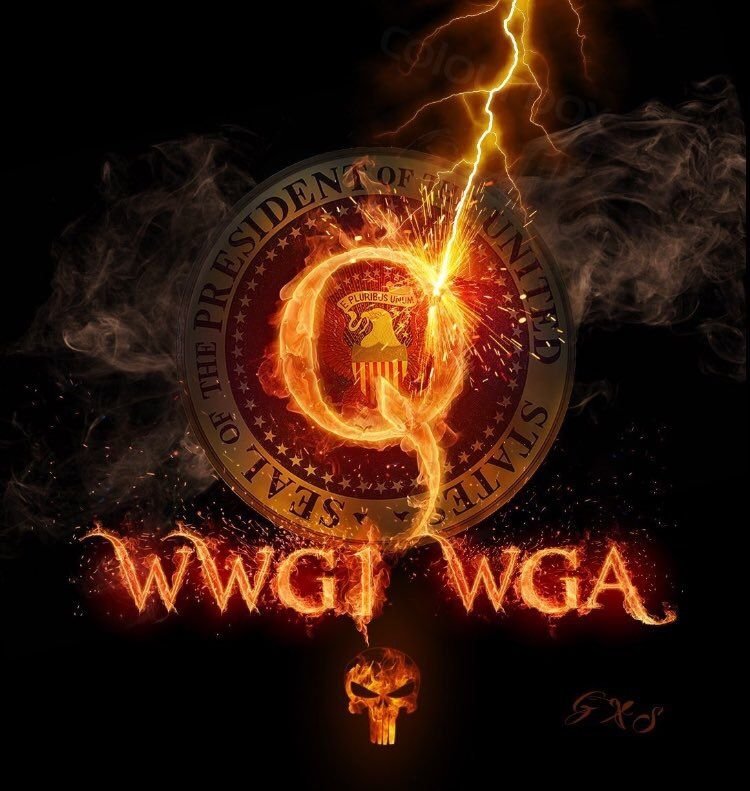(Click image below)—View & interact with the ISAAC KAPPY MIND MAP—(Click image below)
A Condensed History of “Q”
“Q” – A Domestic Political Psychological Warfare Operation
Psychological Tactics Leveraged by the Progenitors of “Q”
1. Ambiguity and the Zeigarnik Effect
-
Tactic: Q’s cryptic “drops”—short, vague posts riddled with questions and codes—left followers with incomplete information, triggering the Zeigarnik Effect, where unresolved tasks or mysteries heighten mental engagement. By posing questions like “Who controls the narrative?” or “What is the keystone?” without answers, Q ensured followers obsessed over deciphering them.
-
Impact: This kept adherents in a state of curiosity and anticipation, driving them to forums like 8chan or Reddit to collaborate on interpretations. The act of piecing together meaning fostered a sense of discovery and intellectual superiority, binding them to the narrative emotionally.
2. Apophenia and Pattern-Seeking Behavior
-
Tactic: QAnon capitalized on apophenia—the human tendency to see patterns in random or unrelated data—by scattering breadcrumbs (e.g., number codes, news references) that followers connected to real-world events. Predictions like “HRC extradition already in motion?” (October 2017) were vague enough to retroactively fit outcomes.
-
Impact: This reinforced confirmation bias—when events aligned (even loosely), it validated Q’s “prophecies”; when they didn’t, followers rationalized discrepancies. The tactic turned everyday news into a grand conspiracy puzzle, making believers feel uniquely perceptive.
3. Fear and Moral Panic
-
Tactic: QAnon’s core narrative—elites trafficking and abusing children—tapped into primal fears and moral outrage, emotions that short-circuit rational analysis. Claims of a “satanic cabal” eating babies or running “Pizzagate” sex rings were designed to provoke disgust and urgency, echoing historical witch hunts or blood libel myths.
-
Impact: Fearful, angry adherents became hypervigilant, seeing threats
-
everywhere (e.g., coded messages in celebrity tweets), while the moral stakes—saving innocents—justified extreme loyalty and action. This emotional hijacking made questioning the narrative feel like betraying a sacred cause.
4. In-Group Identity and Social Reinforcement
-
Tactic: QAnon fostered a tight-knit community with slogans like #WWG1WGA and roles like “digital soldiers,” exploiting social identity theory. Followers were cast as enlightened patriots battling a corrupt “out-group” (the deep state, liberals), with Trump as their heroic leader.
-
Impact: This created a cult-like bond—group validation outweighed external skepticism. Online echo chambers (Q boards, Telegram) amplified this, rewarding participation with praise and purpose. Dissent risked ostracism, locking believers in through social pressure.
5. Authority and Trust Transference
-
Tactic: Q claimed high-level security clearance (“Q-level”), implying insider knowledge, while tying the movement to Trump’s aura of authority. Drops often referenced his speeches or actions as proof of Q’s legitimacy (e.g., “Watch the water” linked to Trump drinking Fiji water).
-
Impact: This exploited trust in perceived experts and leaders. Followers transferred their faith in Trump—already a polarizing figure of loyalty—to Q, bypassing skepticism. The anonymity of Q enhanced mystique
-
, making it a blank slate for projecting credibility.
6. Cognitive Dissonance and Sunk Cost Fallacy
-
Tactic: When predictions failed (e.g., mass arrests in 2017), QAnon reframed them as part of a “plan” (“Trust the plan”) or blamed delays on enemies, leveraging cognitive dissonance—where people rationalize contradictions to preserve belief. The time and effort invested in decoding drops triggered the sunk cost fallacy.
-
Impact: Adherents doubled down rather than abandon the movement, interpreting setbacks a
-
s tests of faith. This resilience turned QAnon into a self-sustaining belief system, immune to disproof.
7. Gamification and Dopamine Loops
-
Tactic: Decoding Q drops was gamified—followers hunted clues across media, earning “wins” when connections clicked (e.g., a timestamp matching a Trump tweet). This mirrored addictive video game mechanics, releasing dopamine with each breakthrough.
-
Impact: The thrill of the chase kept followers hooked, transforming passive belief into active participation. Social media shares of “findings” amplified this reward cycle, spreading the movement virally.
“Q” and Isaac Kappy
Isaac Truly Believed in “Q”
It pains me to watch the video below, or any of Isaac’s videos now as they relate to Q, for that matter. Knowing what we now know about Q; the players, the operation, and the fallout of it all. It is truly sickening to see what Isaac was manipulated into and the state of his mental and physical condition the further down the Q-Hole he went. But I will be the first to tell you that after speaking to all of his friends, family, and the Famalam, that Isaac was true believer in Q.
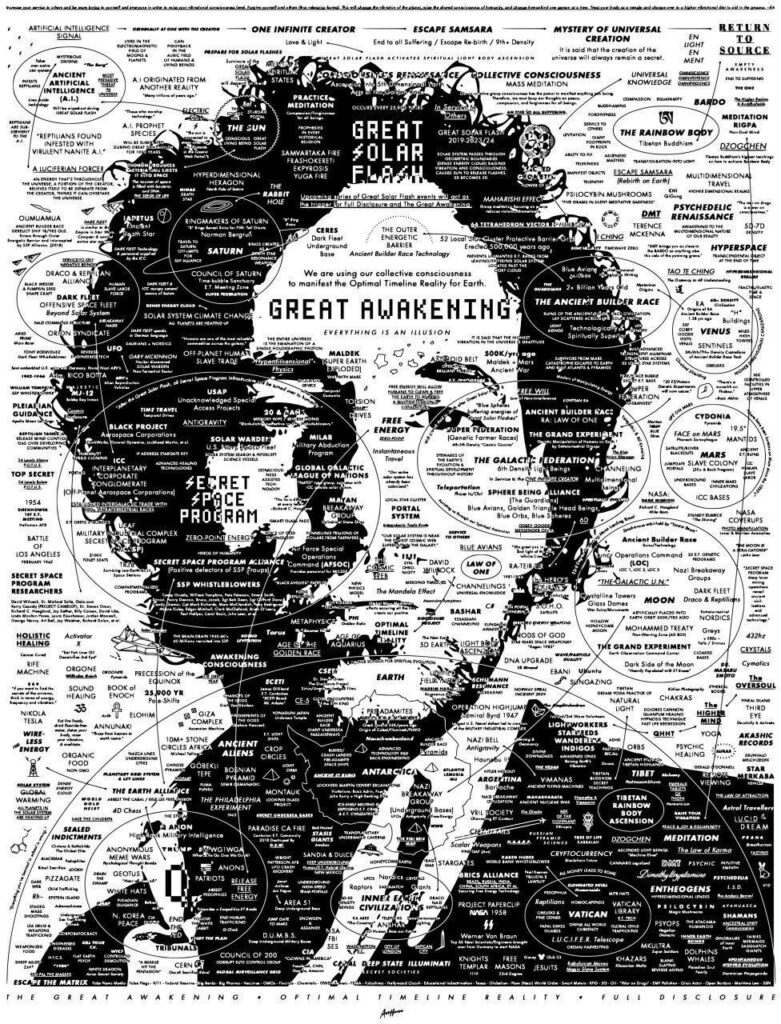
It is no secret that Isaac was a true believer in the “Q” movement as he spoke about it often in his periscopes and personal correspondence. He carried this belief to the very end as he makes apologies for betraying the movement in his last periscope.
In the end, it would appear that Isaac Kappy was being handled and used as a magnifier/accelerator for someone actively pushing the “Q” psyop.
Some of Isaac’s DM’s shortly before his death
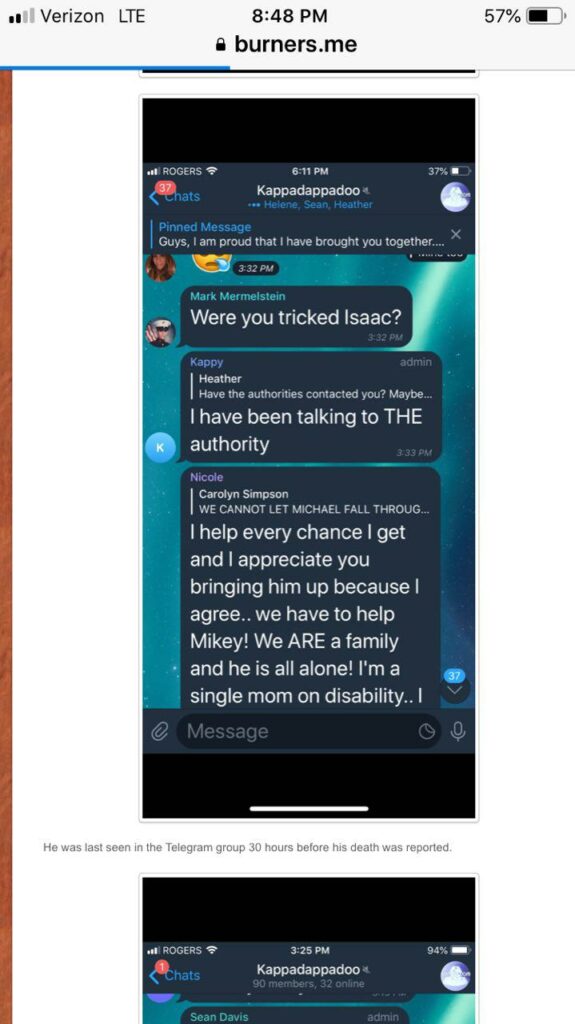
Isaac’s text messages possible relating to “Q”
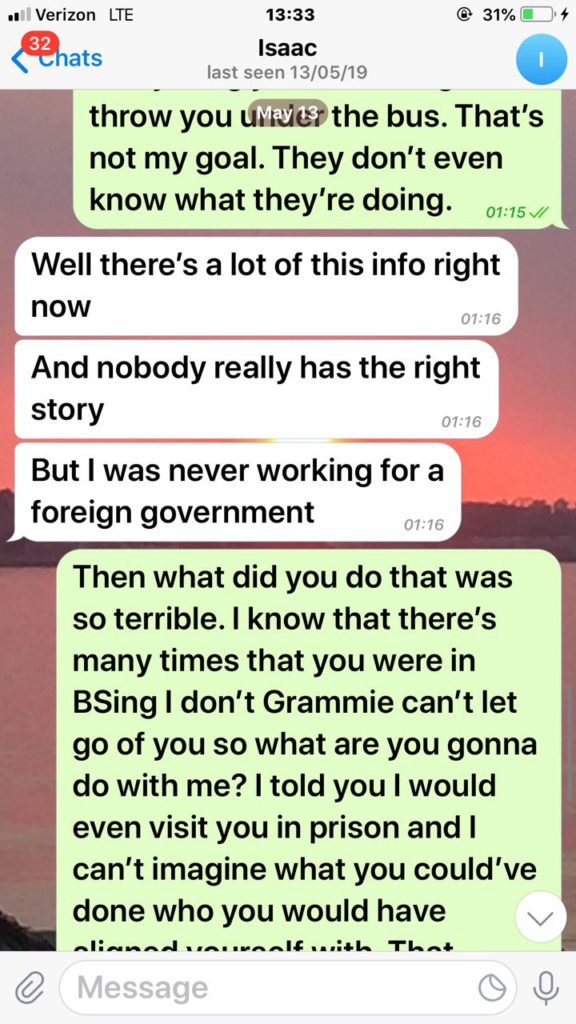
Isaac Kappy’s Downfall
A claim has been made that Isaac mentioned in his second to last known phone call with a friend that he had been contacted by the Trump administration and had been accused of treason. That “friend” is Kirk. Kirk is one of the 5 people who has refused to either speak with myself or publicly at all beyond what they already have about their interactions with Isaac. For reference, Kirk was the person who wrote the closing letter and provided it to Nathan Stolpman 2 days after Isaac’s death. That can be found here. Kirk and his wife KJ were regulars in the Famalam Telegram group and KJ was in one of my research groups. KJ was the public face for both her and her husband Kirk, who both refused to speak with anyone or show his face. KJ also refused to show her face on camera but wanted to be close to the inside information during the investigation.
What was the true nature of Isaac and Kirk’s conversations? No one will ever know aside from Kirk, and Kirk has done well to cover his tracks; provide a closing letter, both creating and sealing a narrative of Isaac’s state of mind the night before his death, and vanishing from sight altogether. her this may give us reason to believe that “Q” may very well be a real operation. The only other explanations would be that either someone was using Isaac’s belief in the “Q” movement as leverage against Isaac in a psyop designed to brake Isaac down mentally and drive him to the actions he took, or that Isaac was delusional.
Regardless of the authenticity of “Q” I believe this is exactly what was occurring.
Isaac also mentioned in this conversation that he had been under bombardment by V2K for 30 or 40 days and believed they could read his thoughts as well. Everyone whom I interviewed and knew Isaac related that there was a steady decline in both Isaac’s physical and mental health during this time.
Couple Isaac’s belief in the “Q” movement with that of a sustained V2K campaign of attack/torture and you have a perfect storm of mind control. I can say that in my three months of investigating this matter that the online world of psyops, conspiracy, LARPing, and organized ritual abuse is enough to drive anyone to an elevated level of anxiety and most certainly paranoia. The consumption of material Isaac was involved in is not conducive to any long-term peace of mind or sustainability for the average person. This is the primary reason the majority of the world avoids these topics and pretends they don’t exist. Everyone reading these words who are involved in this information war knows exactly what I’m talking about.
The fact is, Isaac believed in the “Q” movement 100% and this somehow became congealed with his belief that he must fulfill the prophecy of Judas Iscariot and that he was Judas and needed to pay for his treason. He said as much in his last Periscope video.
Anytime someone commits suicide they are by default labeled sick and/or mentally ill. This in turn automatically strips them of any credibility they once may have had. This is why people are “suicided” as opposed to murdered in the theater of national politics. Jeffery Epstein, Vince Foster, John McAfee, Steve Bing, etc.
Who is Behind the “Q” Psyop?
I Interviewed Someone Who Claimed to be the Original “Q”
In 2020 I personally interviewed a man who claimed to be the original Q before the account was hijacked from him and spun off into what it became. The man called into a livestreaming show and told me he was Q and wanted to do a full interview. so we scheduled a show and I had him on a few days later had him on the show. The man never gave me his real name, and I’ve attempted to reach out to him but he is unreachable. Unfortunately, the interview was lost when YouTube wiped out my channel and at the time I wasn’t making backups of my livestreams. Efforts to find it have not been successful.
The man told me he worked for the U.S. Energy Dept. in a high security government facility near Baton Rouge LA. He stated that one had to have “Q” clearance to work in this facility and he that he himself did. He stated that this “Q” clearance was obviously how he came up with the name “Q”. During our interview the man claimed that he only made the first three posts on the Q account on 4Chan, and that they were about Hilary Clinton. He stated that the entire thing became something he never planned, and that he was just shit posting about Hilary. He said that he was genuinely surprised when the account was stolen and the psyop became mainstream. When I asked him who he believed was responsible for this he stated that the only people who could have possibly done this was Jim and Ron Watkins. From what I can recall of the conversation, he seemed quite familiar with the history and trajectory of the Q op, as well as the terms and lingo of the Q community, but he never proved, nor cared to prove that he was Q.
In hindsight, I believe this man to have been either a disinformation agent, or at the very least, a crank looking for attention. attempts to contact him again have been fruitless and he has never reached out to me again.
My Interview with Manny Chavez III
I also interviewed Manny Chavez III (Defango) and he told me a different story. He stated that the entire Q operation was a psyop that he was responsible for when he got into a backroom DEFCON meeting with U.S. military intel officers and pitched the idea.
Thomas Schoenberger and QAnon
Thomas Schoenberger once claimed to have inside information and told me that the “Q” movement is a Mossad psyop propaganda operation meant to rally and unify the Libertarian/alt-right/conservative/moderate conservative/and center voting blocks to ensure a 2020 victory for Trump and then carry that momentum into supporting a war with Iran in the next term. Keep in mind, it was Thomas Schoenberger who told me this.
Note that I am not claiming this to be a fact. This is simply what Thomas told me in the course of my investigation. If this is true is perhaps the simplest and cheapest military psyop in the history of the world. And one which has been overwhelmingly successful to boot. If this does happen to be true it could still mean that Q is a product of either Trump’s administration or his political allies in Israel.
The above quote was written and posted to this page during late 2019. I’m astonished to read it again April 7, 2025 and understand just how spot on Thomas may have been. Since 2019, Thomas Schoenberger has become quite possibly the more evil and destructive force I’ve ever come across during my entire life. I have watched this Isaac Kappy investigation twist and turn a hundred times, going directions I never thought it would. Pulling in people who seemingly have no connection only to find out later that they are major players and or string pullers.
I am prepared to say at this point that I believe that Isaac was pulled into something he understood only from a only vaguely understood.
“Q” and Cicada (and Defango)
And here it is yet again. Thomas Schoenberger, Manny Chavez III (Defango), and Cicada merging into the “Q” movement. It would seem that these guys and the Cicada crowd have a way of working into everything. This has occurred so far with Q, the Seth Rich murder so far as it relates to Ed Butowsky, and Isaac Kappy.
An Independent and Very Well Documented Account of Defango’s Involvement With The “Q” Movement And It’s Alleged Origins.
https://burners.me/2019/01/15/qanon-blind-items-revealed-all4alarp/
The Belief that the “Q” movement is the product of Cicada has even spurred spinoff art which accuses the Cicada team of these actions and those who push this narrative also try and push the narrative the those involved with Cicada, primarily Thomas Schoenberger is responsible for inflicting the mental torture and mind games which contributed to Isaac Kappy’s destruction.
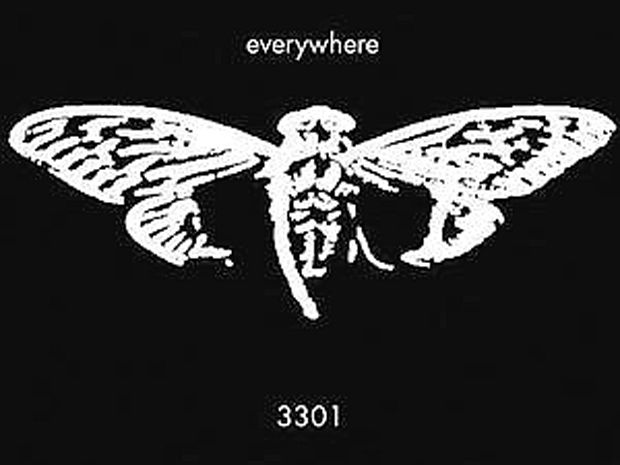
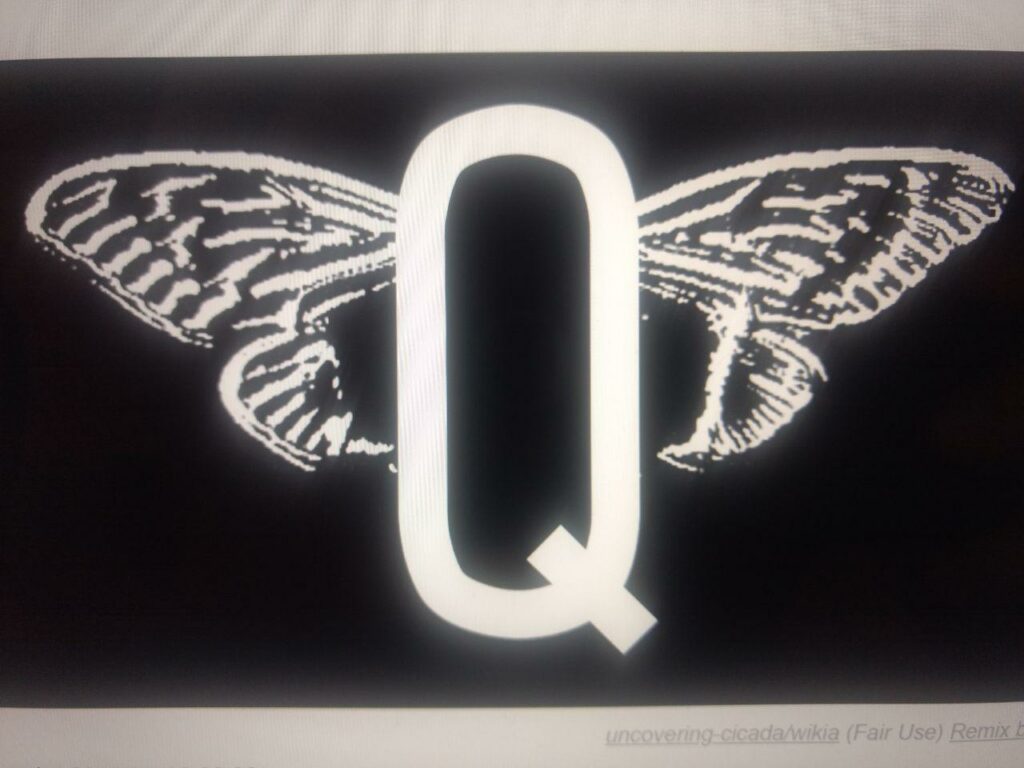
Defango makes public threat to Beth about the Cicada Trademark.
